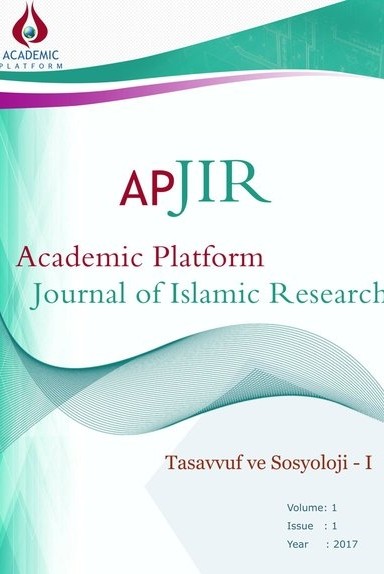
Akademik Platform İslami Araştırmalar Dergisi
Yazarlar: Hür Mahmut YÜCER, Serhat KÜÇÜK
Konular:Din Bilimi
Anahtar Kelimeler:The Unity of Being,The Symbolism of the Seed and the Tree,Muhyi Efendi,Tamthil Shajar
Özet: In the Islamic thought, the only necessary being (wacib al-wujud) is Allah. Compared to him, all other beings’ existence is deemed metaphorical (majazi). Similarly, according to the doctrine of the unity of being (wahdat al-wujud) no being exists except Allah; and all emerge from him. The universe, which is seemingly existing consists of mere images, and thus being metaphorical. These images appear to be existent due to that they are indeed based on a real being in the background. So, what is their initial relevance with truth? How does the relationship between them continue? How can we comprehend and explain it? Sufis used various symbols and metaphors to describe it. One of them is the symbolism of the seed and the tree. The seed carries the knowledge of the whole tree in advance. Then, when a suitable environment is found this knowledge is revealed: the seed sprouts, grows, shoots out branches, foliates, blossoms and finally bears fruits. Each fruit contains seeds having the knowledge of the same tree. Every phase in the growth of the tree differs in terms of shape, colour and function. A once single being has become a multitude of ones. For the point of planting a tree is reaping its fruits, a fruitless tree is undesirable. This universe is also like a tree, and its seed is the Muhammadan Reality (Haqiqat Muhammadiya). The tree appears in a variety of ways, in different environments and appears, grows and eventually bears fruits. The fruit is the perfect man (al-insan al-kamil). Therefore, what counts is to become a perfect man. When examined, it can be noticed that the symbolism of tree is often used in the Qur'an and the hadiths. This symbolism has been frequently utilized by sufis, in poetry and prose in different meanings. In this study, firstly, the place of the symbolism of the tree in the religious and mystical literature will be investigated and then Muhyi Efendi's work titled "Tamthil Shajar" will be introduced. At the end of the study, a Romanized Turkish transcription of this work, authored in the XVIth century, will be presented with the aim of contributing to the relevant literature.
Dergi editörleri editör girişini kullanarak sisteme giriş yapabilirler. Editör girişi için tıklayınız.